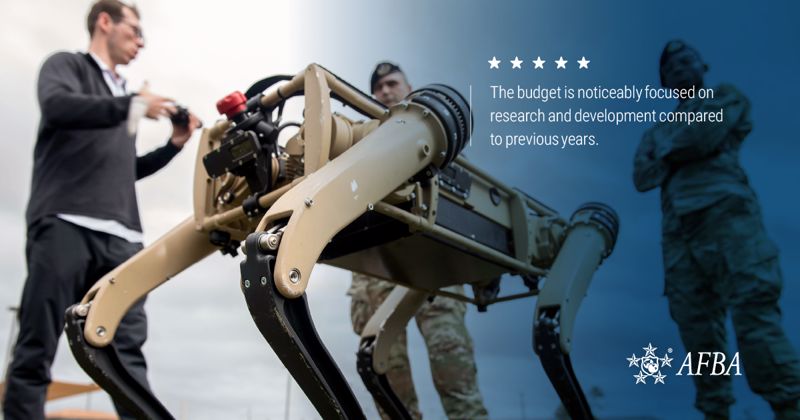The fiscal 2022 president’s defense request was released in June. What does this mean for the future of the Department of Defense, its contractors, and spending? The budget request stemmed from President Joe Biden’s Interim National Security Strategic Guidance and focuses on how the Joint Force will work together to stop security threats and be “ready to fight and win across all domains.”
Emphasizing modernization
 “The appearance of U.S. Department of Defense (DoD) visual information does not imply or constitute DoD endorsement.”
“The appearance of U.S. Department of Defense (DoD) visual information does not imply or constitute DoD endorsement.”The budget is noticeably focused on research and development compared to previous years. Instead of trying to stop gap short-term issues, the DoD is looking to create innovation and take prevention measures.This 2022 request shows that the Department of Defense (DoD) is moving into a new era that prioritizes long-term preparedness compared to previous appeals. Budget petitions of the past shirked forward thinking modernization, but the 2022 version looks to pave the way into future preparedness.
Sometimes the best course of action is to follow the old adage “out with the old, in with the new,” and that is exactly what the DoD is doing to aid in its modernization efforts. The organization asks for authorization to retire weapons, machinery, and technology that does not benefit the department’s defense goals.
Nuclear weapons: a top priority
One of the most important and notable parts of this year’s request is that it is made clear that nuclear modernization is a top priority. The budget fulfills funding needed for the department to step into the future of nuclear technology. This includes artificial intelligence, hypersonics, long-range fires, microelectronics, cyber defense and attack and 5G computer technologies.
Another valuable asset that the budget mentions is the United State’s relationship with its allies.
An asymmetric advantage
The document describes an asymmetric advantage as the United States’ “network of allies and partners around the world.” The request notes the importance of these relationships to securing an end goal that will not only benefit America, but its allies as well. The budget allocates money to increasing the security of these partnerships.
“I would just tell you that one of the strengths of the United States of America is that we have a lot of allies and partners who want to work with us,” Army Gen. Mark A. Milley, the chairman of the Joint Chiefs of Staff said. “And we will be successful in the future.”
Other important requests
Defense leaders told the Senate Appropriations Committee that the budget calls for cutting edge technologies and the full budget required to realize this is $715 billion. This is a substantial increase from last year’s proposal, which was $703.7 billion. The justification for this increase could be seen in President Biden’s goal of ending the “forever wars”.
A portion of the budget is designated to expand military and civilian personnel pay and maintain military health care. Because of the hardships that were faced globally last year, there is plenty of room in the budget to address the changing climate, COVID-19 and any potential threat from extremist groups. Furthermore, Secretary of Defense Lloyd J. Austin III talked about keeping pace with China as a major motivator for the increased budget given to researching new technologies.

